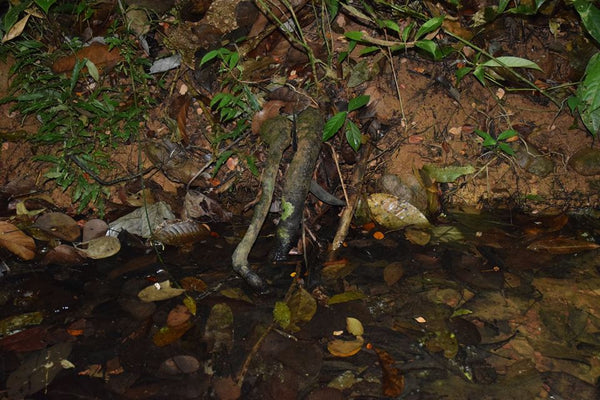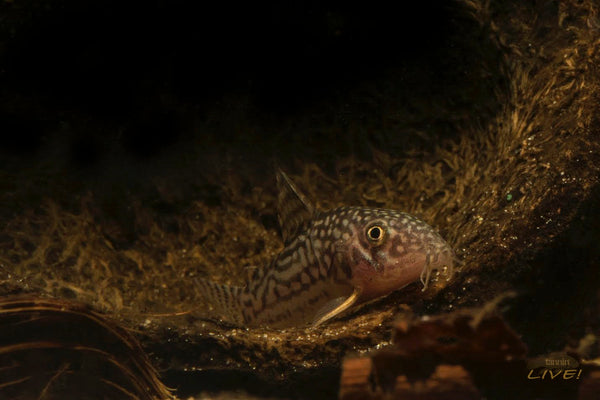- Continue Shopping
- Your Cart is Empty
Fascinating features; seldom replicated...until now.
It's interesting to me to contemplate ways to replicate unique ecological niches that we haven't played with all that much in the hobby. I mean, there is a lot of ground-breaking aquascaping work being done from the artistic perspective, and some amazing biotope aquariums replicating various locales and such, but some of the more odd or unusual microhabitats are seldom replicated, and I think it's sort of a shame, given the global talent pool, availability of materials, and interest.

I for one, would love to see more of these amazingly talented "artistic" 'scapers riffing on some of these interesting ecological niches.
As you probably know by now, we're big fans of habitats like leaf litter beds and flooded forest floors. Not just for the unique aesthetics that they present, but for the potential "functionality" these habitats bring to the aquarium. I think that these habitats, which host a huge variety of fishes, can be "foundational" for unlocking some new secrets of aquatic husbandry.

And by doing a bit of research on natural leaf litter habitats, you can glean some interesting tidbits of information that can be applied to aquarium design. And of course, you get perspective on the threats and challenges facing these habitats. Here's an example of one aspect of these habitats I learned about from a scientific study- the relationship between water depth and leaf litter depth- and how it can be applied to our aquarium designs:
In an area where the water depth was a maximum of 6ft/2 meters, the leaf litter depth was only about 8 inches/20cm. In a very shallow side tributary, the litter depth was about 4 inches/10cm, with the water level above it only about 12 inches/30cm!

That's like "aquarium depth", right? Yeah.
Now, these are just a few of many different areas affected by seasonal inundation, and there are numerous areas that are several meters deep during peak months. However, on the average, many of the little Igarape that I found information on were at best a meter or two deep, with correspondingly deep leaf litter beds.

Obviously, most of us aren't going to use an aquarium that is much more than a meter in depth, but we can always utilize the ratio of water to leaf litter/substrate and play with whatever dimensions excite us. Nonetheless, I'm a big fan of shallow/wide, because if you do build up a nice botanical/leaf litter layer, you don't have a huge column of water above, and can really focus on some of the bottom-dwelling fishes which make these areas home.

I think an ideal tank dimension for a leaf-litter biotope-style aquarium would be something like 48"x 18"x 16" /121.92cm x 45.72cm x 40.64cm (about 60 gallons/227.12 L)...shallow and wide, indeed! With these kinds of dimensions, you could create a leaf litter bed over a thin covering of fine, white sand, with a depth of about (4 inches/10cm) and a water column of about 12 inches/30cm above it. This proportion is a very good simulation of this type of habitat.

With a relatively low profile tank, you're not likely to feature "vertically-oriented" fishes, such as Angelfishes, in this tank! Rather, you'd focus on fishes like characins, including the leaf-litter dwelling "Darter Characins" like Aphyocharax, Elachocarax, Crenuchus, and Poecilocharax. For interest, you could introduce some biotipically appropriate Hoplias and Otocinculus catfishes, too. For the "upper" water columns, you could play with specimens of various Hatchetfishes and Pyrrhulina, killies like Rivulus, and cichlids, such as specimens of Apistogramma, Aequidens, and Crencichla.

Obviously, this is just a guide based on some studies of these areas, and you can create your own species mixes and even specialize in one or two featured species found in these habitats (that would be VERY cool!). The important thing, in my opinion, would be that you are attempting to create a few different aspects of these unique habitats. Filtration could be provided by either a canister filter or an outside power filter, with flow directed towards the surface.
Water temperature, based on studies, would be perfect if you could keep it at about 26 degrees C/78 degrees F. Now, the pH of many of these habitats that were surveyed averaged around 3.5-4.2- extremely acidic water with no real ionic content, that, as we've discussed previously, is something that is challenging to achieve, and equally as interesting to maintain (notice I said "interesting", because it's not impossible...just challenging). My little shallow leaf litter bed tank was able to maintain a pH of about 6.2-6.3. A far cry from the aforementioned 4.2, but not bad, from an aquarium standpoint!

Thusly, a modest-sized aquarium operated at low pH would be a great "testbed" for various types of research into the maintenance of these types of biotopes. Likely, you could "scale up" once you've mastered achieving your desired pH in a small tank.
Just one of many fascinating features of Nature, seldom faithfully replicated...until now. Let's see more of these unique ideas and replications!
Stay creative. Stay curious. Stay observant. Stay bold. Stay diligent...
And Stay Wet.
Scott Fellman
Tannin Aquatics







Scott Fellman
Author